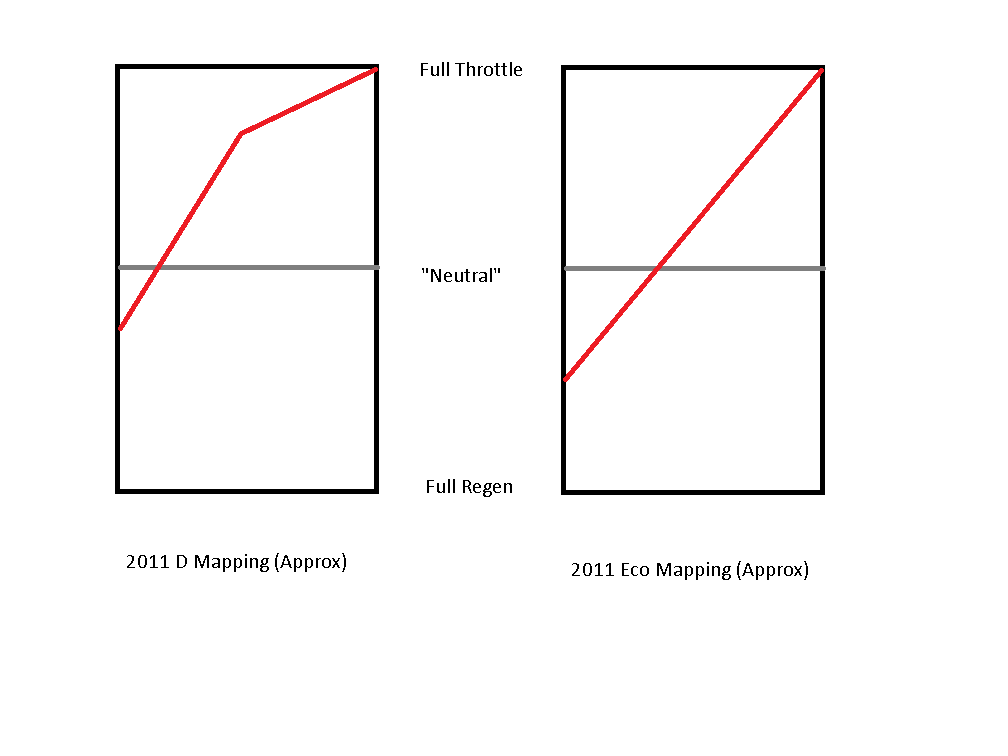wwhitney
Well-known member
Hello,
I recently bought a 2022 Leaf SV, and my previous experience is with a 2011 Leaf SL. The 2011 had just two pedal mappings, D and Eco, and so I understand them pretty well. By mapping I mean a function that takes % pedal depression (0 to 100%) and tells you the regen/throttle % (so you could call it -100% to 100%).
Below is a crude drawing of my understanding of the 2011 Leaf pedal mappings. The basic points are there: Eco has more regen on the accelerator, has a deeper "neutral" point, and is linear in power beyond the neutral point (pretty sure); while D front-loads the power on the accelerator. Otherwise I may have some of the details wrong: the exact y-intercepts, whether the slope is actually constant through the "neutral" point (which would depend on whether the y-axis is labeled from -100% to 100% or labeled in power output), and whether the D mode actually has a slope discontinuity or is smoother.
The 2022 seems like it has potentially 12 different mappings: D/B/R; Eco or not ; E-pedal or not. Or maybe there are fewer than that.
So is there any detailed info available on the different pedal mappings on the 2022, ideally accurate graphs like below? For example, I assume that E-pedal puts all the regen on the accelerator (y-intercept is -1), but is that true for all 6 cases, including reverse?
Thanks, Wayne

I recently bought a 2022 Leaf SV, and my previous experience is with a 2011 Leaf SL. The 2011 had just two pedal mappings, D and Eco, and so I understand them pretty well. By mapping I mean a function that takes % pedal depression (0 to 100%) and tells you the regen/throttle % (so you could call it -100% to 100%).
Below is a crude drawing of my understanding of the 2011 Leaf pedal mappings. The basic points are there: Eco has more regen on the accelerator, has a deeper "neutral" point, and is linear in power beyond the neutral point (pretty sure); while D front-loads the power on the accelerator. Otherwise I may have some of the details wrong: the exact y-intercepts, whether the slope is actually constant through the "neutral" point (which would depend on whether the y-axis is labeled from -100% to 100% or labeled in power output), and whether the D mode actually has a slope discontinuity or is smoother.
The 2022 seems like it has potentially 12 different mappings: D/B/R; Eco or not ; E-pedal or not. Or maybe there are fewer than that.
So is there any detailed info available on the different pedal mappings on the 2022, ideally accurate graphs like below? For example, I assume that E-pedal puts all the regen on the accelerator (y-intercept is -1), but is that true for all 6 cases, including reverse?
Thanks, Wayne

